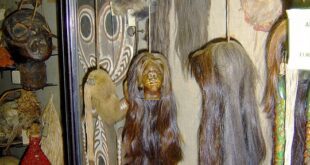Inviting on a journey into the past, let’s explore the six million years of human evolution, from the Australopithecines to Homo Naledi. Time travels are easy when we have pictures to remind us of every step of our evolutionary trail.
Early Humans: Australopithecines
The first sign of a human-like creature existed around 7 million years ago. Until 2 million years ago, numerous variations in the Homo species dotted the earth. Before our ancestors of the Homo, Australopithecines wandered 4 million years ago and were the first significant bipedal primates in history. Austrolopithecus from east Afria’s rift valleys would evolve and lead up to the emergence of early hominids.
Homo Habilis: The Tooling Humans
Homo habilis and his tool-making abodes described the pre-historicity era of early humans between 2.3 million and 1.4 million years ago. An upright larger skull suited to human brain grew, comparable walk to modern humans, and tool-making in the riverline habitats during the intermediate ages of the Homo family.
The Great African Exodus
The evolvement of Homo erectus occurred about 1.9 million years ago when unidentified groups living in western Asian areas spread eastwards. Humans roamed in new areas in Africa, became versatile, and began everyday routines of hunting and gathering. Groups traveled to new heights and catered to climates never ventured before.
The First Homo Sapiens
The most common developments think 1.8 and 0.2 million years ago belong to Homo sapiens safely upgraded with a first-class apartment complex known as the bigger braincase, sturdy skull, high brow ridges. Long neck, oval shaped skull, combined with a chin enabled improved language and communication also were evident of early art showings that began evolving. At dusk, humans moved beyond aggressive wild lives through migration cooperation and partner production thanks to a more developed infrastructure. Finally, at about 200,000 years ago, the birth of Homo neanderthalensis as seen in fossils appeared across stretches of land such as Africa, western Asia, and Europe.
Homo naledi: The Surprising Find
June 2015 saw the announcement of the species “Homo naledi today,” following a global excavation in South Africa’s Sterkfontein Chamber underground. Amazing, well-preserved specimens, compounded in over than 1,500 bones, marking increased diversity into the Homo species. What fascinates researchers most is the little brain could be expressed in this cache that points towards another truly bizarre mechanism of evolution at play.
Closing Remarks
The historical record remains dormant in most cases. Some stories offer blood, suspense, survival, and human ingenuity. The human development so clearly tells us that humans amount to a small branch than ours. Do these moments spark curiosity in seeing more evocative timelines again? Let’s continue these wonderous strokes right from the comfort of home and we will find solace, intrigue and passion unlocking the rich tapestry of human experience.
 Mind Uncharted Explore. Discover. Learn.
Mind Uncharted Explore. Discover. Learn.

